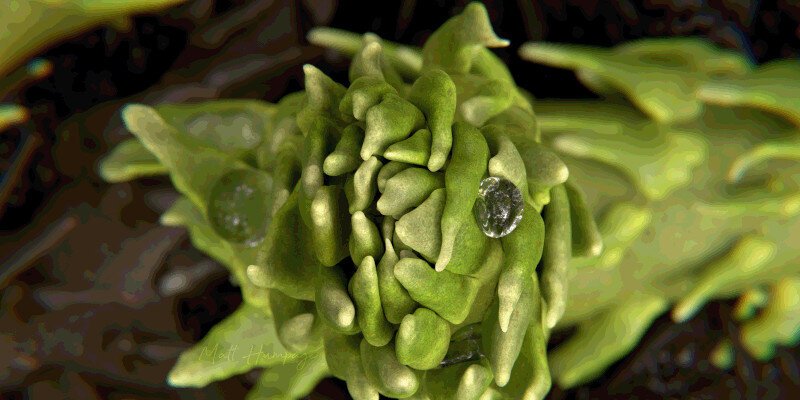New research published in the journal Science has challenged long-held beliefs about the evolution of leaves and the presence of Fibonacci spirals in ancient plants. The study, led by Holly-Anne Turner, a Paleontology Ph.D. student at University College Cork (UCC), utilized a 3D model of a 407-million-year-old plant fossil to gain new insights into plant patterns.
Contrary to previous assumptions, the research revealed that the arrangement of leaves into distinct Fibonacci spirals was not common among the earliest land plants. Instead, these ancient plants displayed a different type of spiral, suggesting that leaf spirals evolved along two separate paths.
Fibonacci spirals, which are based on the mathematical Fibonacci sequence, are prevalent in nature, accounting for over 90% of spirals found in plants. Examples include the spirals observed in sunflower heads, pinecones, pineapples, and succulent houseplants.
Scientists have long been puzzled by the prevalence of Fibonacci spirals in plants, often referred to as “nature’s secret code.” While it was previously believed that Fibonacci spirals were an ancient feature that evolved early on in land plants and remained conserved, the discovery of non-Fibonacci spirals in the 407-million-year-old plant fossil challenges this theory.
The research team, which included scientists from the University of Edinburgh, University Münster in Germany, and Northern Rogue Studios in the UK, utilized digital reconstruction techniques to create 3D models of leafy shoots from the fossilized clubmoss Asteroxylon mackiei. This species is one of the earliest known examples of a plant with leaves in the fossil record.
The fossil was exceptionally preserved and discovered in the Rhynie chert, a Scottish sedimentary deposit that contains evidence of early ecosystems when land plants first emerged and began covering the Earth’s surface.
By analyzing the leaf arrangement in Asteroxylon, the researchers found that the plant exhibited non-Fibonacci spiral patterns, which are rare in plants today. This discovery challenges the previous understanding of Fibonacci spirals in land plants and suggests that non-Fibonacci spirals were common among ancient clubmosses. It also indicates that the evolutionary history of leaf spirals in ancient clubmosses diverged from that of other major plant groups, such as ferns, conifers, and flowering plants.
To visualize the extinct Asteroxylon mackiei, which has been extinct for over 400 million years, the research team collaborated with digital artist Matt Humpage to create the 3D model using digital rendering and 3D printing techniques. This approach allowed them to examine the plant’s structure in detail and gain new insights into its evolutionary characteristics.
Source: University College Cork
